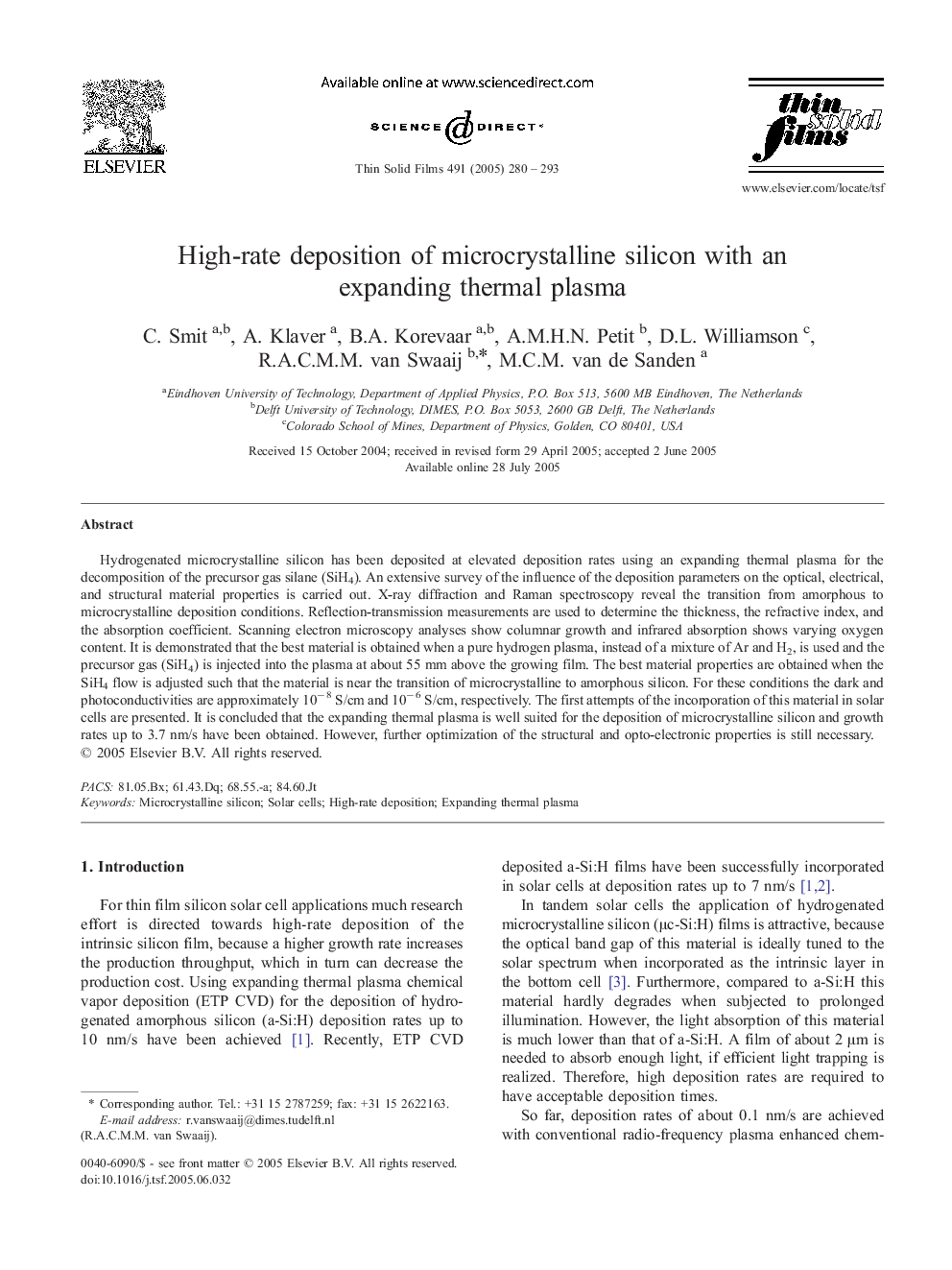| Article ID | Journal | Published Year | Pages | File Type |
|---|---|---|---|---|
| 9812209 | Thin Solid Films | 2005 | 14 Pages |
Abstract
Hydrogenated microcrystalline silicon has been deposited at elevated deposition rates using an expanding thermal plasma for the decomposition of the precursor gas silane (SiH4). An extensive survey of the influence of the deposition parameters on the optical, electrical, and structural material properties is carried out. X-ray diffraction and Raman spectroscopy reveal the transition from amorphous to microcrystalline deposition conditions. Reflection-transmission measurements are used to determine the thickness, the refractive index, and the absorption coefficient. Scanning electron microscopy analyses show columnar growth and infrared absorption shows varying oxygen content. It is demonstrated that the best material is obtained when a pure hydrogen plasma, instead of a mixture of Ar and H2, is used and the precursor gas (SiH4) is injected into the plasma at about 55 mm above the growing film. The best material properties are obtained when the SiH4 flow is adjusted such that the material is near the transition of microcrystalline to amorphous silicon. For these conditions the dark and photoconductivities are approximately 10â 8 S/cm and 10â 6 S/cm, respectively. The first attempts of the incorporation of this material in solar cells are presented. It is concluded that the expanding thermal plasma is well suited for the deposition of microcrystalline silicon and growth rates up to 3.7 nm/s have been obtained. However, further optimization of the structural and opto-electronic properties is still necessary.
Keywords
Related Topics
Physical Sciences and Engineering
Materials Science
Nanotechnology
Authors
C. Smit, A. Klaver, B.A. Korevaar, A.M.H.N. Petit, D.L. Williamson, R.A.C.M.M. van Swaaij, M.C.M. van de Sanden,
